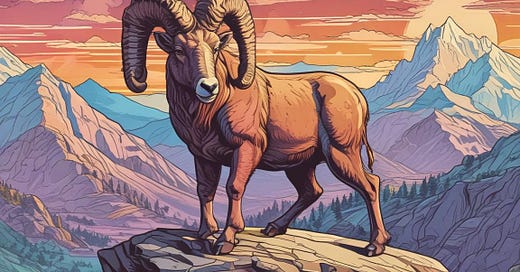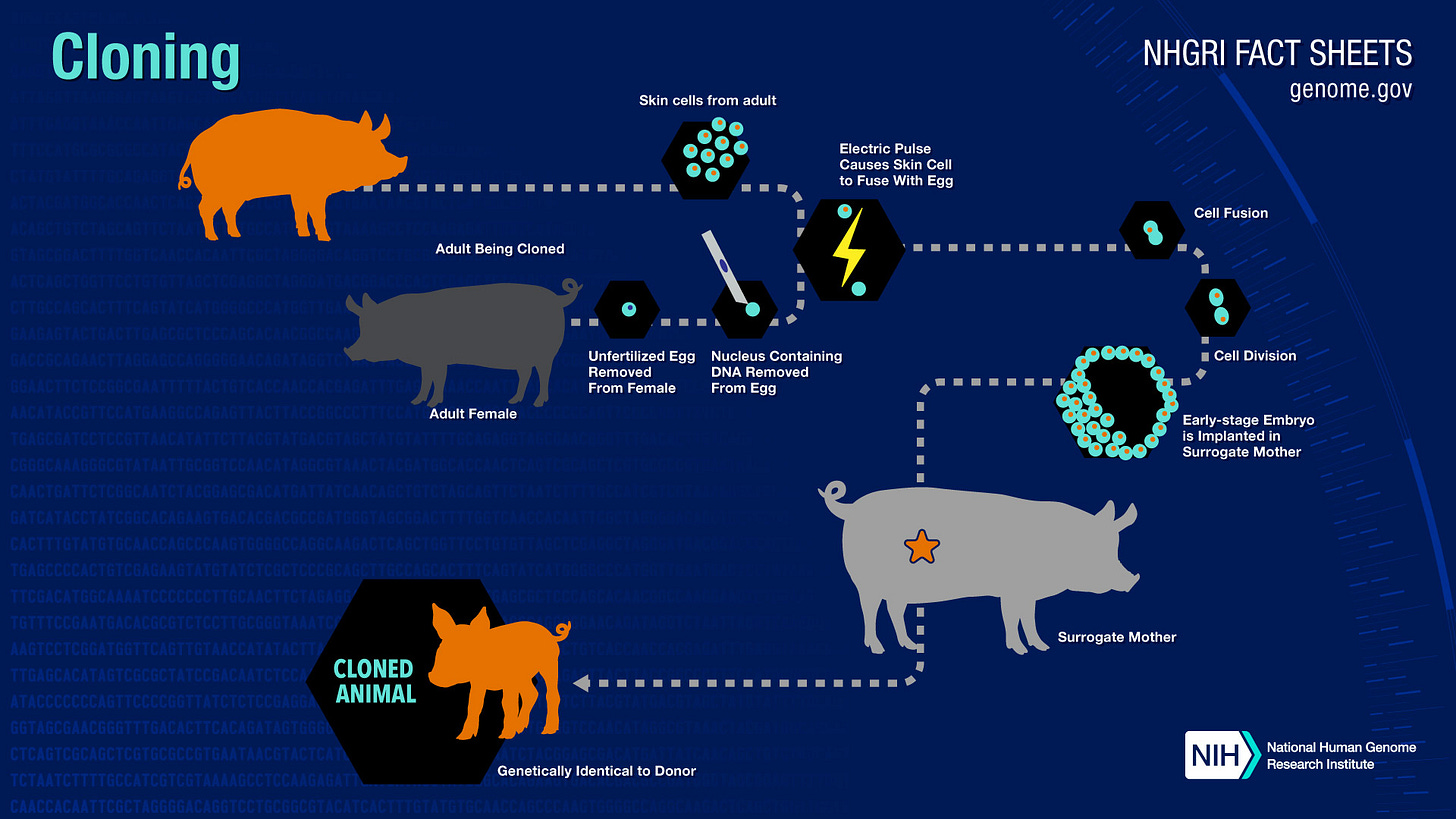The regulation of genetically modified animals probably started with a question of whether genetically modified fish that are fluorescent (Glofish(r) )1 should or could be regulated. The FDA was the lead on regulating GMO animals and they determined they were pets, but not being released into the environment so they were not within their scope of authority to regulate.
The FDA did regulate GMO mosquitoes bred to be sterile to self-eradicate; as well as drug-producing goats. However, it was determined that EPA was probably best at oversight of mosquito breeding; and USDA was probably best at regulating drug-producing goats (although FDA is co-managing the goats with USDA). Swine that are genetically modified to produce organs for transplantation in humans are best regulated by both USDA and FDA.
FDA sends out cease and desist letters to creative entrepreneurs working on genetically modified animals. For example, a dog breeder who was experimenting with eliminating debilitating genetic conditions in the dog breed was allowed to continue his work after applying for an exemption each year with FDA. On the other hand, a startup in California was ordered to stop producing test kits for certain types of genetic diseases, since these would fall under the “device” category for FDA regulation.
But wildlife introduces a new set of risks.
In 2024, a man was arrested2 for creating a gigantic bighorn sheep for trophy hunting in Montana. He did this by illegally importing body parts of the world’s largest Bighorn Sheep, the Marco Polo argali sheep (Ovis ammon polii), from Kyrgyzstan. In violation of international law he brought in semen from this large animal with forged veterinary certificates to begin his breeding process. He used the semen to artificially inseminate female Bighorn Sheep in the U.S. and then cloned a male to produce three for breeding purposes.
All of this was in violation of the Lacey Act:
The Lacey Act prohibits interstate trade in wildlife that has been taken, possessed, transported or sold in violation of federal or state law. The Lacey Act also prohibits the interstate sale of wildlife that has been falsely labeled. The Act is one of the most powerful tools the United States has to combat wildlife trafficking and prevent ecological invasion by injurious wildlife.
In addition, the Convention on Trade in Endangered Species (CITES) includes the Bighorn Sheep, ovis polii, on Appendix II which prohibits the importation of any body parts as well as the animal into the U.S..3 It is also on the IUCN Red List of worldwide endangered species. It is considered “close to vulnerable”.4 IUCN is a non-governmental organization that tracks the extinction status of endangered species, in nine different categories. “Vulnerable” is in the middle of the range of nine categories of risk.
Biopiracy
Trophy hunters use special permitting features of CITES to bring back species that are bred for hunting.
Kyrgyzstan’s hunting season for the Marco Polo Argali is from AUgust 15 - November 30. The Marco Polo Argali is one of the largest wild sheep species in the world and is considered a highly sought-after trophy animal. Kyrgyzstan is known for producing Marco Polo Argali with exceptional horns. The special environment for hunting in Krygyzstan with its high altitude, steep mountains and unpredictable weather make it challenging. It brings foreign revenue into the country because of this unique hunting experience. Taking the genome of this animal and using it to create a similarly large sheep, would dilute the hunting tourism draw for Krgyzstan. Taking the genetic material and cloning this Sheep and further breeding it is a form of biopiracy that takes this genetic resource and commodifies it for profit that is not shared with the people who protected and provide a home for it.
While there is no international crime called “biopiracy”, however, it is a violation of international law under the Biological Diversity Treaty and several of its protocols addressing the access and benefit sharing of genetic resources.5
Marco Polo Argali: This is one of the largest wild sheep species in the world and is considered a highly sought-after trophy animal. Kyrgyzstan is known for producing Marco Polo Argali with exceptional horns. The hunting season is August 15–November 30. Hunts can be challenging due to the high altitudes, steep slopes, and unpredictable weather.
Types of Cloning
There are three different types of artificial cloning: gene cloning, reproductive cloning and therapeutic cloning: Gene cloning produces copies of genes or segments of DNA; reproductive cloning produces copies of whole animals; and therapeutic cloning produces embryonic stem cells for experiments aimed at creating tissues to replace injured or diseased tissues.
The creation of the Bighorn Sheep was done by reproductive cloning.
According to the U.S. Department of Justice, Schubarth sent genetic material from the argali parts to a lab to create cloned embryos. Schubarth then implanted the embryos in ewes on his ranch, resulting in a single, pure genetic male Marco Polo argali that he named “Montana Mountain King” or MMK.6
Our first instance of thinking about whether cloned animals be regulated?
In March 2000, PPL Therapeutics made international headlines when it announced that it had finally succeeded in cloning pigs. At the same time, Akira Onishi, an animal breeder at Japan’s National Institute of Animal Industry in Tsukuba, Japan reported the cloning of Xena, a pig.
The cloning of pigs presents an opportunity to produce an unlimited source of organs for transplantation, or xenotransplantation for humans needing heart valves, hearts, and other body parts. However, the risks of xenotransplantation carry with it the risk of infection with pig retroviruses which can infect human cells.7 The human genome can even be used to design a body part through the use of pigs.
Cloning other animals followed. Animal registries require their animals be registered for breeding and improving the breed. So when the question of whether cloning a highly prized horse for breeding required that it be registered, the American Quarter Horse registry, had the opportunity to decide that question. In 2015, the Fifth Circuit, U.S. Appeals Court in Texas, held that the American Quarter Horse Association (AQHA) could reject cloned horses from the Registry, denying claims the Association had violated antitrust law.8
Cloning animals for food
On the other hand, cloned animals for food present no real differences from a normally bred animal, whether it is for meat or milk. So FDA has approved cloned animals for these purposes.
Why can’t we then clone animals for sport?
Cloning wildlife presents another risk not inherent in farming practices, although the Bighorn Sheep were “farmed” for trophy hunting, they existed largely in the wild. Hunting them would naturally place the cloned Bighorn Sheep in the wild and likely to interbreed with domestic Bighorn Sheep, transmorphing naturally occurring wildlife forever.
Arthur “Jack” Schubarth of Vaughn, Montana, an 81-year old man, was sentenced this April for several felony counts under the Lacy Act, October 2024. His work spanned about a decade from 2013 to 2021. His punishment resulted in six months in jail and a fine of $4000 as a donation to Wildlife philanthropy, and a $20,000 fine. He could have received a maximum penalty of five years in prison and a fine of up to $250,000 as well as three years of supervised release9
The court had indicated they wanted a sentence that would be primarily to deter future attempts to violate the Lacy Act in this way.
How do we give adequate due process and notice to people who may think there is nothing illegal about this kind of breeding? Why can pets be genetically altered, but wildlife cannot? Wildlife can very quickly change when any member changes. A large Bighorn Sheep may present greater destruction to limited plants and fauna for grazing, and result in loss of species and even erosion of mountains that once held the plants in the wake of the introduction of the new species.
Further, the reduction in genetic diversity makes a population vulnerable to disease that might kill the entire population due to the uniformity in their genome. Using clones and distributing semen to ranchers ensured a pathway to loss of genetic diversity in the wildlife population in Montana for the Bighorn Sheep.
It would also be helpful for the U.S. Fish & Wildlife Service to initiate an ad campaign to better inform the public about these emerging technologies that are now accessible to anyone. Otherwise, despite the deterrent effect the court was seeking, lack of notice of its illegality and an absence of an ad campaign by the regulators will likely result in this case repeating itself.
https://www.glofish.com/international-use-and-license-notice
https://www.justice.gov/opa/pr/montana-man-pleads-guilty-federal-wildlife-trafficking-charges-part-yearslong-effort-create
https://cites.org/eng/app/appendices.php
https://www.visitkyrgyz.com/things-to-do/animals-listed-in-the-red-book-of-endangered-species
https://www.cbd.int/ABS
https://www.justice.gov/opa/pr/montana-man-pleads-guilty-federal-wildlife-trafficking-charges-part-yearslong-effort-create
289 Science 1118 (Aug. 18, 2000).
776 F.3d 321 (5th Cir. 2015) at https://casetext.com/case/abraham-amp-veneklasen-joint-venture-v-am-quarter-horse-assn .
https://www.justice.gov/opa/pr/montana-man-pleads-guilty-federal-wildlife-trafficking-charges-part-yearslong-effort-create






"It would also be helpful for the U.S. Fish & Wildlife Service to initiate an ad campaign to better inform the public about these emerging technologies that are now accessible to anyone. "
Absolutely, Professor. Education is key for the reasons you give. Thanks again for an excellent, eye-opening article. Appreciate you.